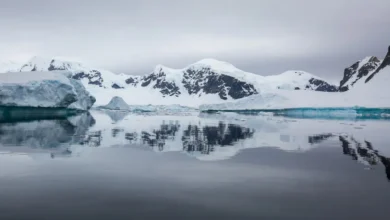Is the Low Snowpack this Year a Sign of Global Warming?

The poor coverage of snowpack trends in the Seattle Times and other newspapers was very evident today on the front page of our local newspaper (see below).
A story “Winter has arrived, snow not so much” filled the right side of the front page. A reprint of a NY Times article by Mike Baker, this story suggests that the lack of snow was the result of global warming/climate change (see below).
Amazingly, this article neglects the key reason why our snowpack is not doing too well: this is a very strong El Nino year.
This incurious article does not review the trend of mountain snowpack over the past several decades: a crucial test of whether climate change could be blamed.
Just poor journalism. But let’s do the proper analysis in this blog, and you can decide for yourself.
El Nino
We are in a very strong El Nino and such events are highly correlated with warm winter temperatures and poor snowpack over the region. Sea surface temperatures have been about 2C above normal over the past two months (see below).
According to NOAA/NWS, El Nino years are associated with warmer than normal October-November-Decembers (see below for a local climate division)
And snowfall is less than normal over our region for El Nino autumn periods (see below, brown colors)
The warmth and low snowpack over the Northwest during El Nino years are produced by enhanced low pressure over the eastern Pacific and high pressure to the northeast of our region. The observed pattern for November 1-December 27th this year at 500 hPa (about 18,000 ft) is just like that.
El Nino is clearly a major driver of our anomalous warmth and low snowpack, something not mentioned in the article.
But there is another check on the Seattle Times/NY Times climate-change origin of the low snowpack.
If climate change was the origin, there would be a progressive loss of snowpack over the region as the planet warmed.
This is something we can check. Below is a plot of the water content in the NW snowpack on April 1 for the past few decades (1964-2023), courtesy of past Washington State Climatologist, Mark Albright. The linear trendline is also on there (black/brown line).
Lots of ups and downs, but no trend. Thus, climate change is not causing a significant long-term decline in our snowpack.
An independent check on these numbers is to determine when the mountain snowpack has melted out. Clearly, with less snowpack, the snow would melt out sooner. Below is the date of the melt-out at Steven Pass (around 4000 ft).
If anything it has gotten later.
Now don’t get me wrong. The planet is slowly warming. Human emissions are a part of that. And this will contribute to reduced snowpack over the long term. But currently, the impacts of global warming on Northwest snowpack are quite small.
Suggestions that our greatly reduced snowpack this year is due to climate change are clearly false.
It is a shame that the national newspaper on record (the NY Times) and our local paper (the Seattle Times) can’t investigate the situation sufficiently to get the story right.
Their readers are being poorly informed.
____________________________
Before I forget, Happy New Year to all. If anyone missed my ATMS 101 class and would like to take a similar class by an excellent colleague of mind (Professor Greg Hakim), you can take it online or in person during the upcoming quarter. And if you are over 60 you can take it for little cost using the UW Access program












